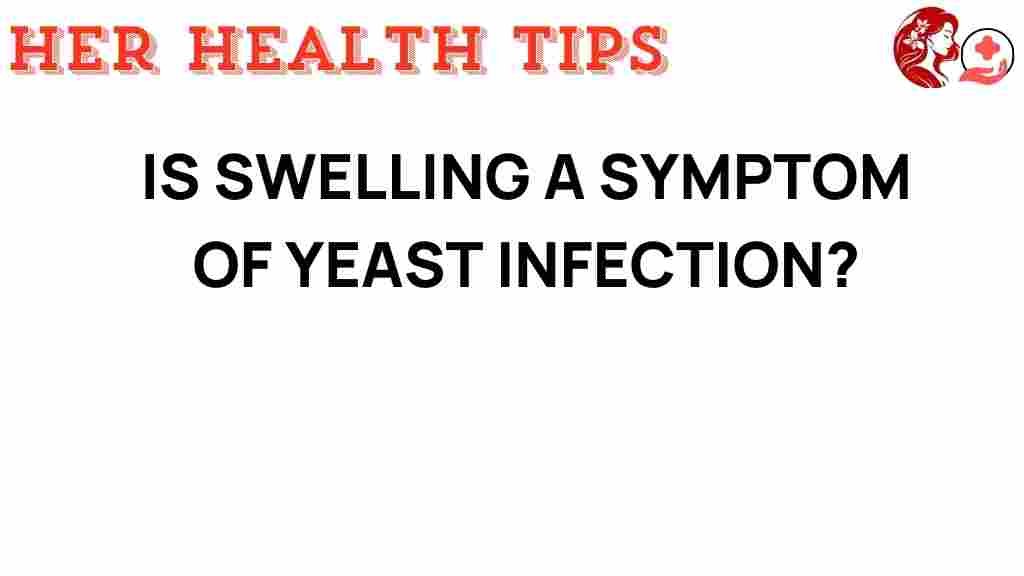Unraveling the Mystery: Is Swelling a Symptom of Yeast Infection?
Yeast infections are common fungal infections that can affect various parts of the body, particularly in women. While the symptoms of a yeast infection are often well-known, the relationship between swelling and yeast infections can be confusing. In this article, we will explore the symptoms of yeast infections, including swelling, inflammation, and other related health concerns. We will also provide insights into diagnosis and treatments, ensuring you have the information needed for your wellness journey.
Understanding Yeast Infections
A yeast infection is primarily caused by the overgrowth of a fungus known as Candida. Under normal circumstances, Candida is present in small amounts in the body, but certain factors can lead to its overgrowth. These factors include:
- Antibiotic use
- Hormonal changes
- Weakened immune system
- Diabetes
- Poor diet
Common symptoms of a yeast infection include:
- Itching and irritation in the affected area
- Redness and swelling
- Abnormal discharge
- Pain during intercourse
- Burning sensation during urination
Is Swelling a Symptom of Yeast Infection?
Swelling can indeed be a symptom associated with yeast infections, particularly in the genital area. When the body responds to the overgrowth of Candida, it may trigger an inflammatory response, leading to swelling. This inflammation is part of the body’s immune response to fight the infection. However, it’s essential to recognize that swelling can also arise from other conditions, making it crucial to understand the context of the symptoms.
Symptoms of Yeast Infection and Inflammation
In addition to swelling, yeast infections can cause a variety of symptoms that reflect inflammation and irritation. Some of the most notable symptoms include:
- Redness: The affected area may appear red and inflamed.
- Itching: Intense itching is a hallmark of yeast infections.
- Discharge: Typically, the discharge is thick and white, resembling cottage cheese.
- Pain: Discomfort during urination or sexual intercourse is common.
- Swelling: As mentioned, swelling can occur due to inflammation.
Recognizing these symptoms is vital for early diagnosis and treatment, which can prevent further complications.
Diagnosis of Yeast Infection
To confirm a yeast infection, it is important to consult a healthcare professional. Diagnosis typically involves:
- Medical History: A detailed medical history will be taken, including past infections and symptoms.
- Physical Examination: A physical examination of the affected area may be performed.
- Laboratory Tests: Samples may be taken to identify the presence of Candida. This can include:
- Swabbing the affected area
- Microscopic examination
- Culturing the sample to identify the specific strain
It’s essential to receive an accurate diagnosis, as symptoms of yeast infections can mimic other conditions, such as bacterial vaginosis or sexually transmitted infections.
Treatments for Yeast Infection
Treatment for a yeast infection typically depends on the severity and frequency of the infections. Options include:
- Over-the-Counter Antifungal Medications: Creams, ointments, or suppositories containing antifungal agents like clotrimazole or miconazole can be effective.
- Prescription Antifungal Medications: For more severe cases, doctors may prescribe oral antifungal medications such as fluconazole.
- Home Remedies: Some individuals find relief through natural remedies, such as:
- Probiotics to restore healthy bacteria
- Coconut oil with antifungal properties
- Garlic, known for its antifungal effects
Always seek medical advice before starting any treatment, especially if symptoms persist or worsen.
Preventing Yeast Infections
Preventing yeast infections involves several lifestyle changes and practices that promote overall health. Here are some tips:
- Maintain Proper Hygiene: Keep the genital area clean and dry.
- Avoid Irritants: Limit the use of scented soaps, douches, and feminine hygiene sprays.
- Wear Breathable Fabrics: Choose cotton underwear and avoid tight-fitting clothing.
- Healthy Diet: Incorporate probiotics and limit sugar intake, as high sugar levels can promote Candida growth.
- Manage Stress: Stress can weaken the immune system, making one more susceptible to infections.
Troubleshooting Tips for Swelling and Other Symptoms
If you are experiencing swelling alongside other symptoms of a yeast infection, consider the following troubleshooting tips:
- Monitor Symptoms: Keep track of your symptoms, their duration, and any changes.
- Consult a Healthcare Provider: If swelling persists or is accompanied by severe pain, fever, or other concerning symptoms, seek medical advice.
- Evaluate Recent Activities: Consider any recent changes in medications, diet, or hygiene practices that may have contributed to the infection.
- Review Medical History: If you have a history of recurrent yeast infections, discuss this with your doctor for potential preventive measures.
By following these tips, you can better manage your symptoms and seek appropriate care when needed.
When to Seek Medical Advice
While yeast infections are common and often treatable at home, there are specific situations where medical advice is necessary:
- If symptoms do not improve within a few days of treatment.
- If you experience severe pain or swelling.
- If you have recurrent yeast infections (four or more in a year).
- If you have other medical conditions, such as diabetes or a compromised immune system.
In these cases, a healthcare provider can offer a more comprehensive evaluation and tailored treatment options.
Conclusion
In summary, swelling can indeed be a symptom of a yeast infection, typically resulting from the body’s inflammatory response to the overgrowth of Candida. Understanding the symptoms, diagnosis, and treatments available is essential for managing your health and wellness effectively. If you suspect a yeast infection, particularly if accompanied by swelling or other concerning symptoms, it is crucial to seek medical advice for proper diagnosis and treatment.
For more information on yeast infections and related health topics, consider visiting this resource or consult with your healthcare provider.
Remember, being proactive about your health and seeking timely medical advice can lead to better outcomes and improved wellness.
This article is in the category Conditions and created by HerHealthTips Team
